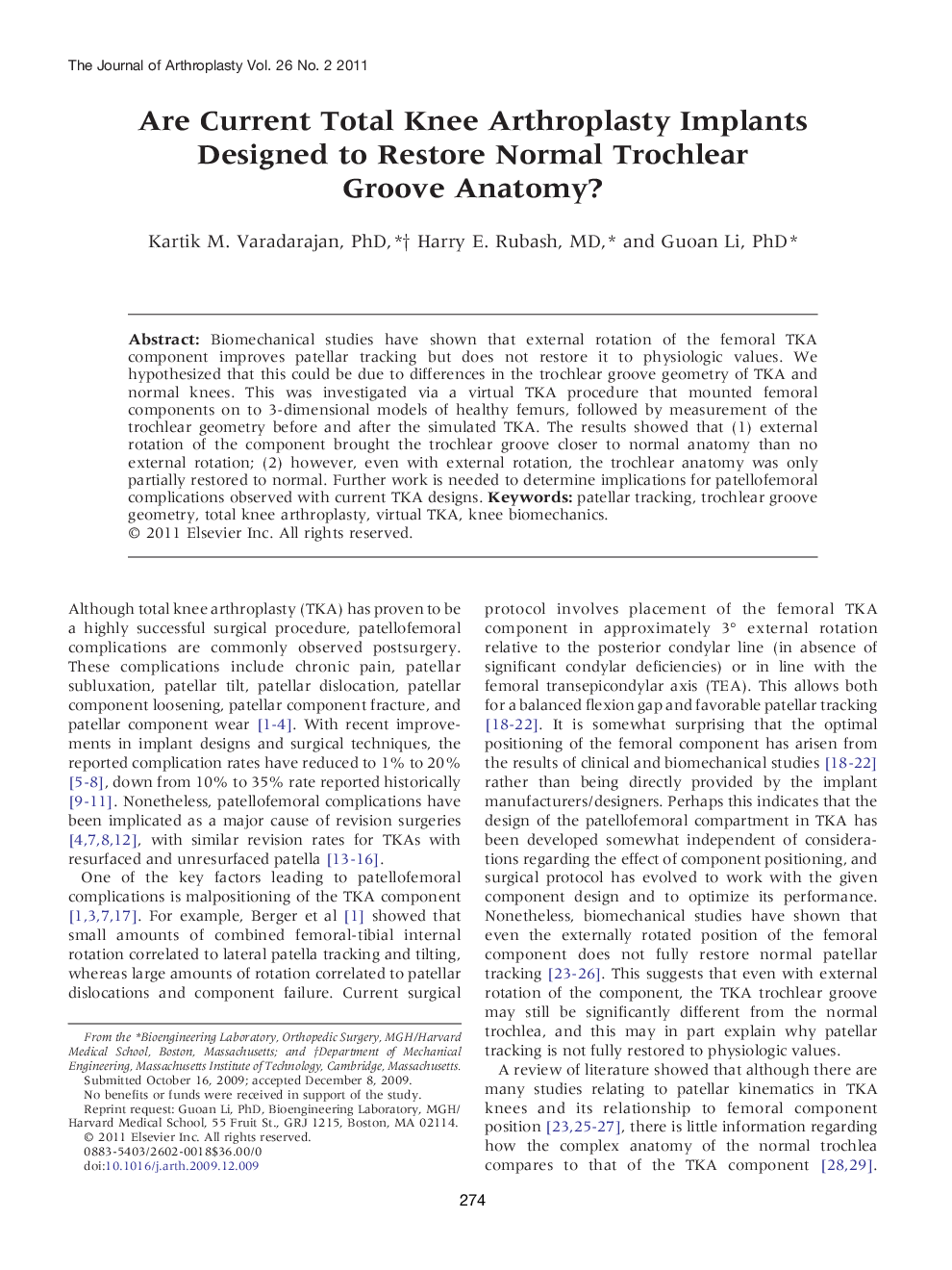| Article ID | Journal | Published Year | Pages | File Type |
|---|---|---|---|---|
| 4063328 | The Journal of Arthroplasty | 2011 | 8 Pages |
Biomechanical studies have shown that external rotation of the femoral TKA component improves patellar tracking but does not restore it to physiologic values. We hypothesized that this could be due to differences in the trochlear groove geometry of TKA and normal knees. This was investigated via a virtual TKA procedure that mounted femoral components on to 3-dimensional models of healthy femurs, followed by measurement of the trochlear geometry before and after the simulated TKA. The results showed that (1) external rotation of the component brought the trochlear groove closer to normal anatomy than no external rotation; (2) however, even with external rotation, the trochlear anatomy was only partially restored to normal. Further work is needed to determine implications for patellofemoral complications observed with current TKA designs.
